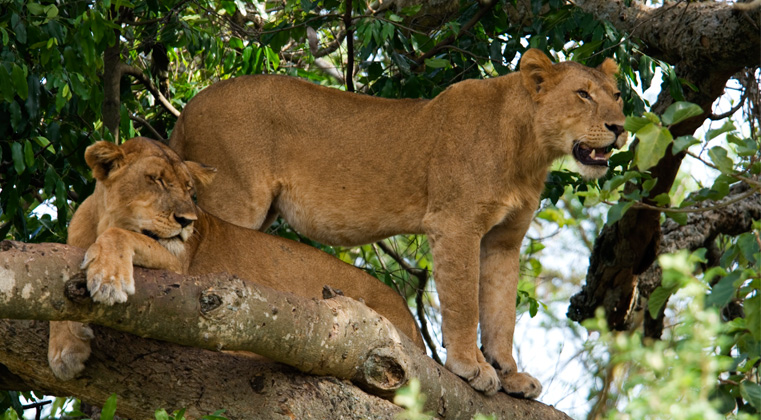Conservationists are calling on the public especially those living adjacent to protected areas to do more in protecting the population of wildlife big cats which they say are currently are at the brink of extinction in Uganda.
The appeal comes as a precursor to the commemoration of the World Wildlife Day that is set to be hosted in Kasese district on March 3. This year’s theme is “Creating a safe environment for the survival of Uganda’s big cats”.
While Uganda boasts of a diverse and significant number of wildlife, some of which include rare species like mountain gorillas, conservationists say that the numbers of the big cats; lions, leopards, spotted hyenas and cheetahs is shrinking.
This is attributed largely to the growing human activity around the protected areas like national parks which creates a conflict since the carnivores are seen as threats to people and their livestock.
The Minister of Tourism, Wildlife and Antiquities, Prof Ephraim Kamuntu says that there is need for a shift in mindset so that Ugandans can better appreciate the value of preserving the big cats both in terms of economic gains and balancing the ecosystem.
“Uganda’s tourism is largely based on natural assets and this is where these cats fall. It is important to note that tourism makes up 23.9% of our total exports, earning us about USD 1.32 billion annually,” Minister Kamuntu told the press at a news conference on Thursday.
“That is what stabilizes our foreign exchange and commodity prices. Therefore, we intrinsically depend on wildlife for survival”.
He said that lions, leopards and cheetahs also continue to be threatened by climatic changes which have affected their habitat, forcing them to seek prey in surrounding human settlements.
According to Uganda Wildlife Authority (UWA), the population of lions in Uganda has drastically dropped from 1,000 in 1990 to 420 currently.
Andrew Seguya, the Executive Director for UWA blames this on human activity.
“The biggest threat to these animals are the actions of human beings. In pastoral communities, animals like lions are seen with too much hostility; all people think of whenever they see a lion is to take out spears and kill it,” Seguya said.
In other cases, people poison the carcasses of dead animals in order to kill carnivores that feed on it.
“This needs to change. People must understand that these lions play an important role in the ecosystem,” he added.
Seguya explained that lions and other predators control the populations of herbivorous animals, which if not kept in check could negatively affect the environment on which other creatures depend. The longer effect of this is that the livestock that people use for consumption get deprived of their food.
“We need to understand that these cats bring in the foreign exchange that later is used to build roads, hospitals and other facilities,” Seguya aded.
Statistics show that unlike the trend in the numbers of the big cats, the population for other wildlife species such as zebras, elephants and kobs has spiked significantly over the years. However, this again points to the imbalance in the ecosystem with the carnivores on the low end.
A big portion of foreign tourists that visit Uganda are especially attracted to the wildlife, particularly to spot lions whose footprint is most popular in Kidepo, Murchison Falls and Queen Elizabeth national parks.
The significance of these cats is better explained by the trends in tourists that visit the zoo at Uganda Wildlife Education Centre (UWEC) in Entebbe where a few lions, cheetahs and leopards are tamed.
“About 80% of the visitors who come to the zoo have come to see the big cats. They want to see the lion – especially the male which is considered the king of the jungle. Therefore, they contribute a lot in terms of visitation numbers and revenue,” James Musinguzi, the Executive Director for UWEC told SoftPower News in an interview.







